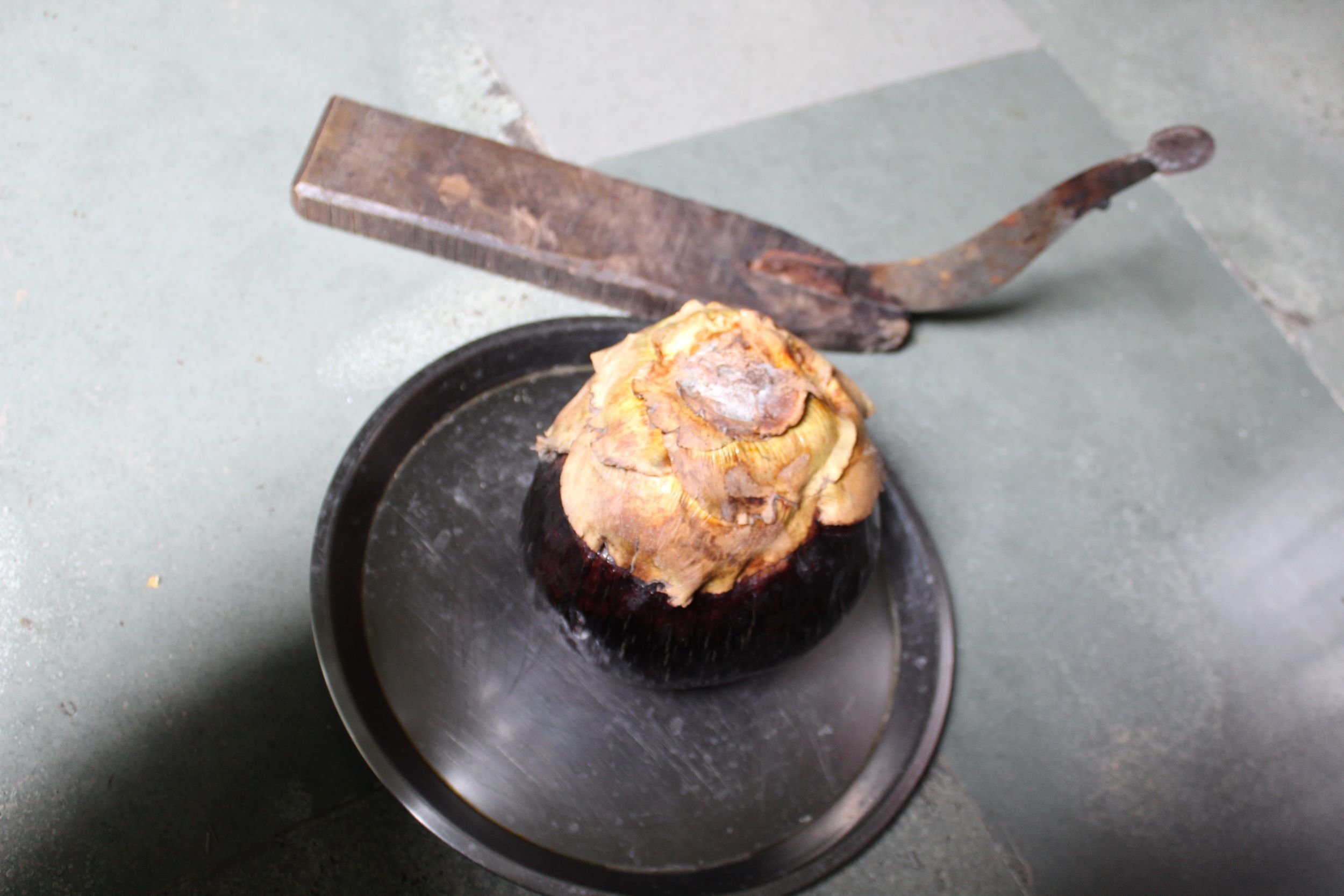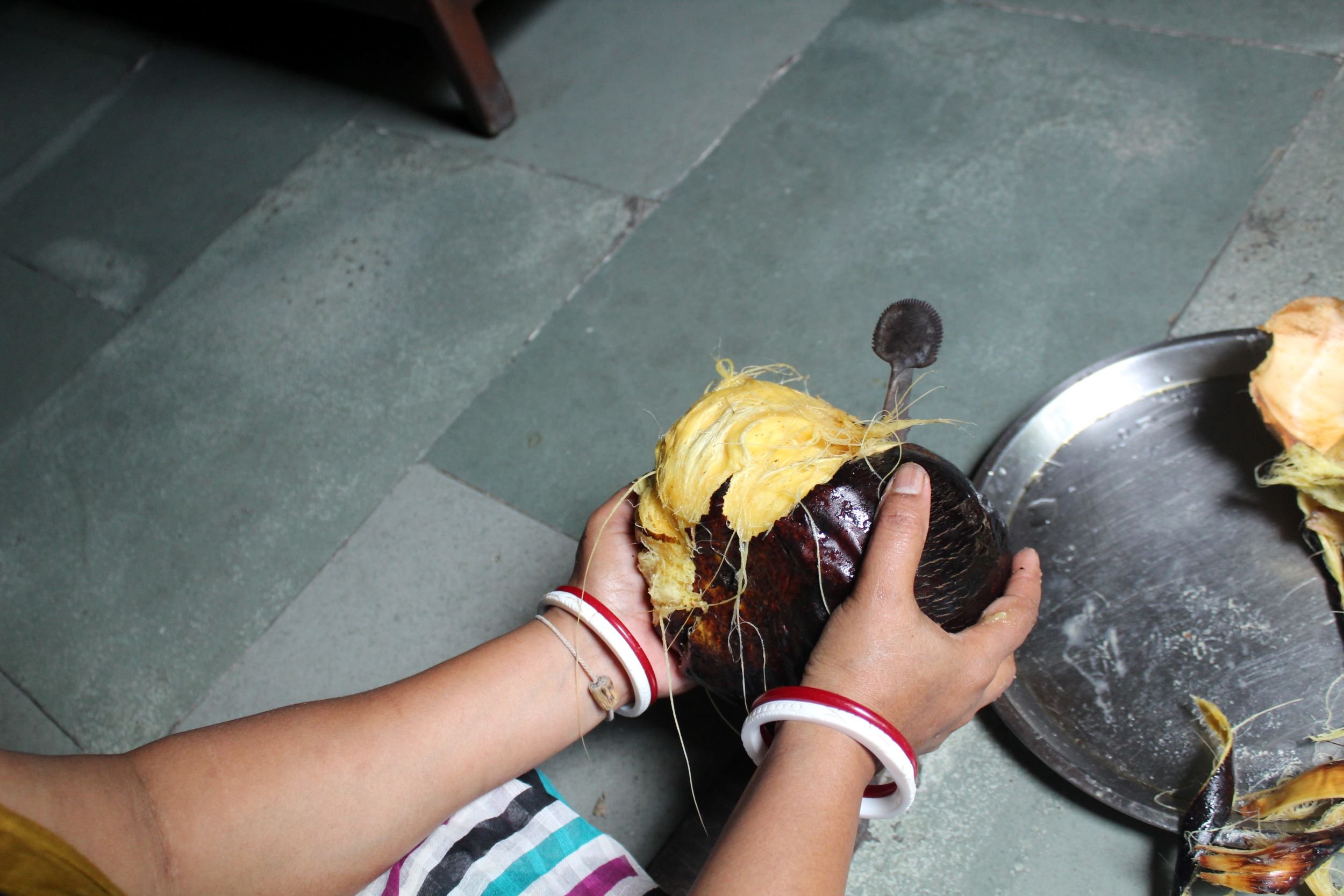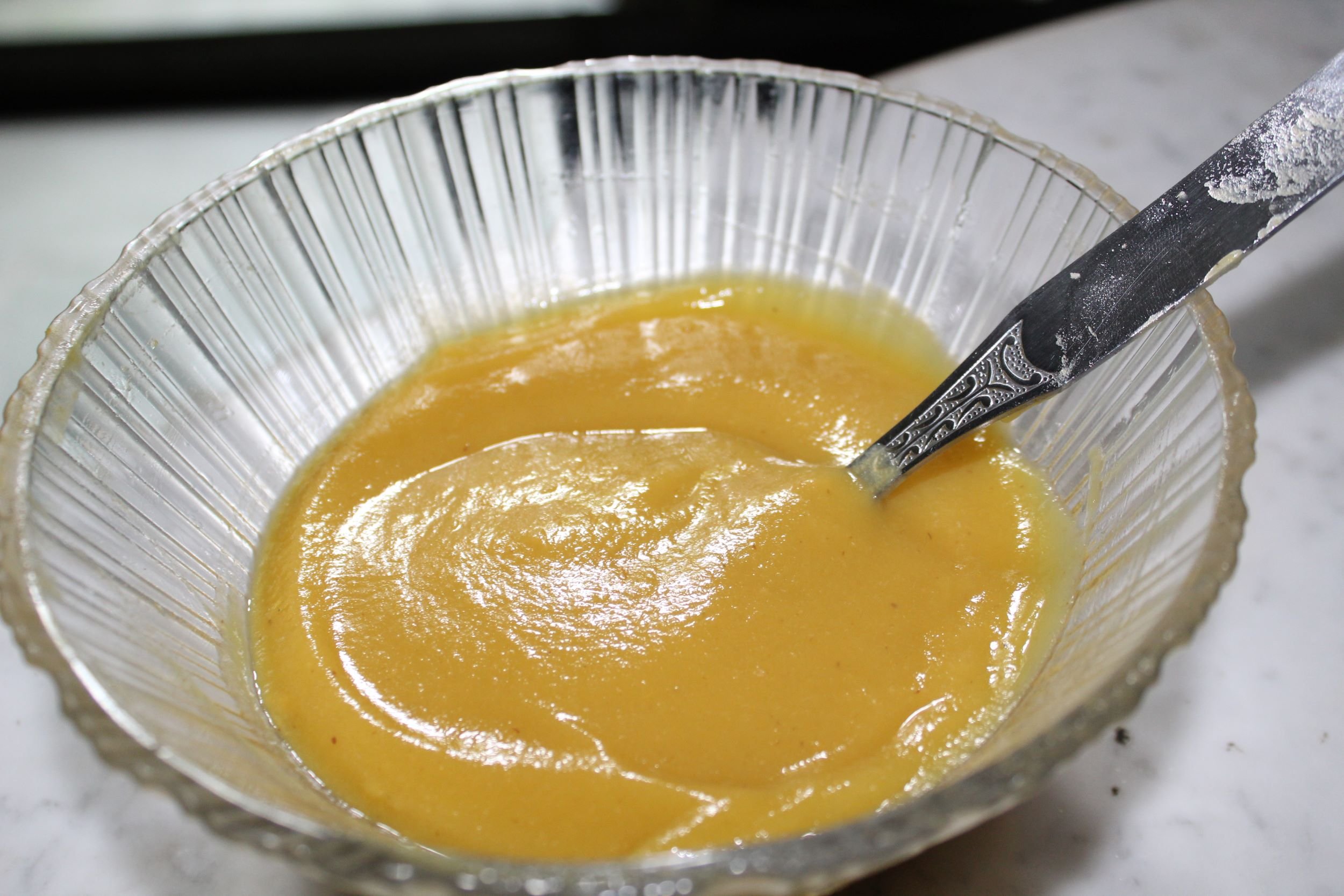Taaler Patishapta: Delicate Crepes Made with Ice Apple

Selina Sen documents the sweet crepes or patishapta that are typically eaten for festivals like Poush Sankranti, and Janamashtami. Her preferred recipe contains taal, or ice apple.
Every January, for Poush Sankranti, my family makes patishapta: delicious coconut-filled crepes with roots in Bengal. They are a labour of love, meant for festive occasions, like this beloved harvest festival and for Janamashtami. Poush Sankranti crepes are thin and lacey; rice and semolina pancakes stuffed with jhola gur (nolen gur or date palm molasses), coconut and khoya.
Sankranti patishaptas are an annual ritual in most Bengali households.
But allow me to tell you about a considerably more elaborate (and much rarer) iteration of patishapta, made with palmyra pulp (to replace jhola gur).
Palmyra is a very versatile palm, beloved of South Asia’s coastal cuisines, and known by many names including toddy palm, ice apple, and, in Bengal, taal. Its sap yields a sweet, complex drink called neera, which when fermented turns into an intoxicating toddy. The fruit, when young, contains jelly-like segments, that resemble the texture of lychee. By the end of the monsoon, this jelly hardens into large seeds, ready for germination. The hard seed is encased in a fibrous mesocarp with a golden pulp, which has a fruity caramel flavour, prized in Bengal as it is incorporated into desserts.
As a child, I have been witness to the usual Ghoti rivalries (between natives of West Bengal and refugees from East Pakistan, now Bangladesh) , especially concerning food, as my grandparents were from Bangladesh and West Bengal respectively. There were heated debates on the merits and demerits of several different styles of cooking with the pulp of the Palmyra. My grandfather preferred deep fried taaler boras — fritters made with taal pulp, mashed bananas, flour and milk, mixed together and fried. My grandmother would be enraged at this — mashed bananas overwhelm the taste of the taal, and she preferred making the more elaborate taaler patishapta (crepes) to celebrate Janmashtami. The fruit was believed to be such a favourite of Lord Krishna; there is a folk song where Radha teases him, that he liked the fruit because the colour matched his skin.
Everyday patishapta is commonplace, but they lack the fruity complexities of taal, and are definitely not as special.
Although my grandmother died many monsoons ago, she is alive in so many ways. Here is my Dida’s recipe for taaler patishapta. She did not like it too sweet, so as not to mask the taste of the golden pulp. The most tedious part of the recipe is extracting the pulp from the hairy, fibrous mesocarp. My grandmother had a special implement called a taal ghosuni, but I just peel off the black skin, separate the three segments, moisten the fruit with water and rub against a large strainer.
RECIPE FOR TAALER PATISHAPTA
Ingredients
For crepes batter (makes about 8):
1 cup (250 ml) palm pulp
1 cup maida
¾ cup rice flour
¼ cup fine semolina
⅓ cup sugar
A pinch of salt
1.5 cups of milk, slightly thickened and at room temperature.
Flavourless oil to grease the nonstick pan.
Stuffing:
1 cup palm pulp
1 cup milk
⅓ cup sugar
⅓ cup khoya crumbled
¾ cup grated coconut
½ tsp cardamom powder
Method
Mix together the batter ingredients well, there should be no lumps. Let it rest for an hour.
Meanwhile, prepare the stuffing in a thick bottomed pan, adding each ingredient consecutively into the thickened milk and stirring until the mixture leaves the sides of the pan. At this stage, a delicate aroma will flood the kitchen. Mould the mixture into thick cigar shapes.
Use a small non-stick pan (I use an appam chatti). Be sure to grease the pan between the frying of each crepe as the mixture tends to stick.
When the batter begins to lift off, place the cigar at one end of the crepe, and roll.
Arrange the crepes in a flat serving tray and garnish with nuts.
Photos credit: Varun Sen Bahl
Selina Sen is a nationally and internationally published author , journalist and scriptwriter.
ALSO ON GOYA












